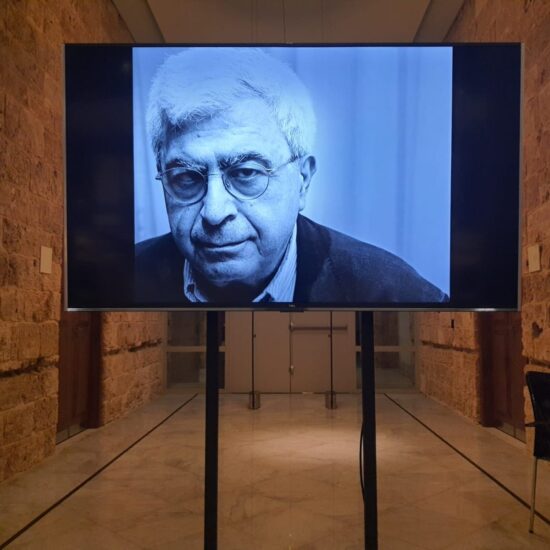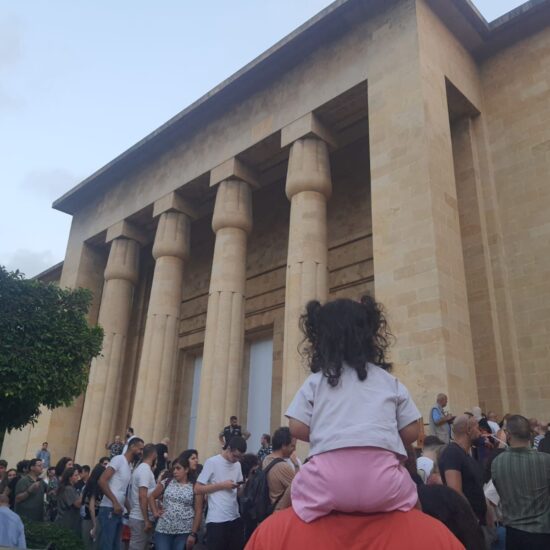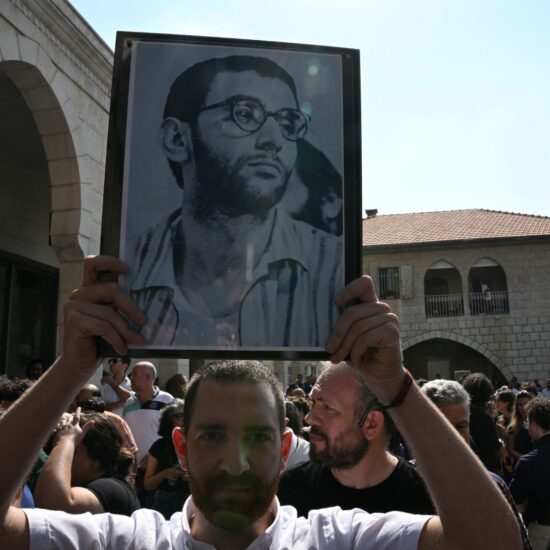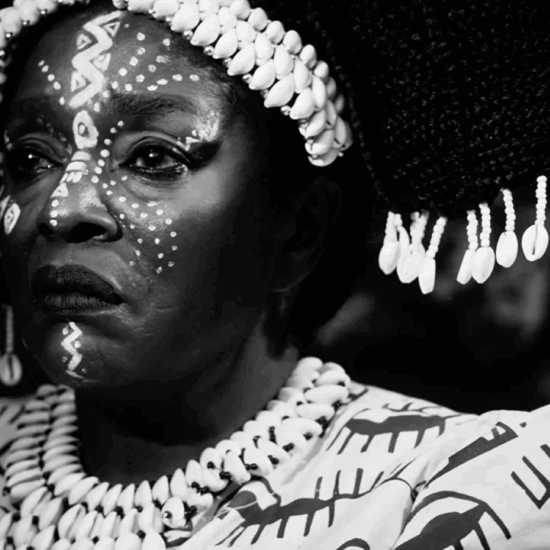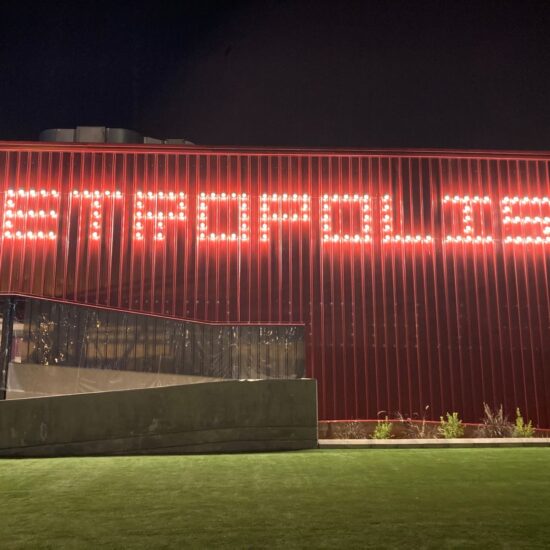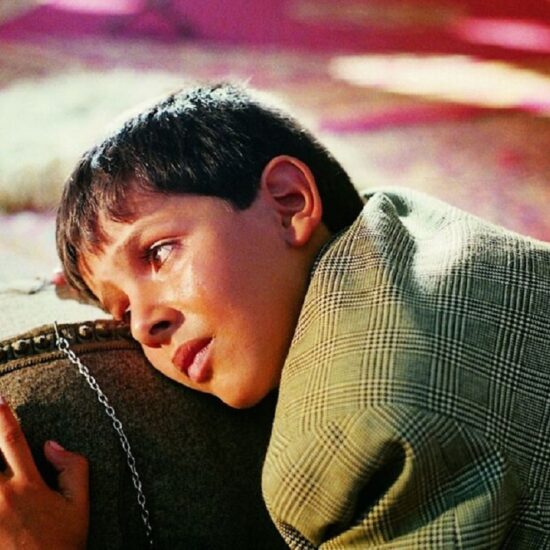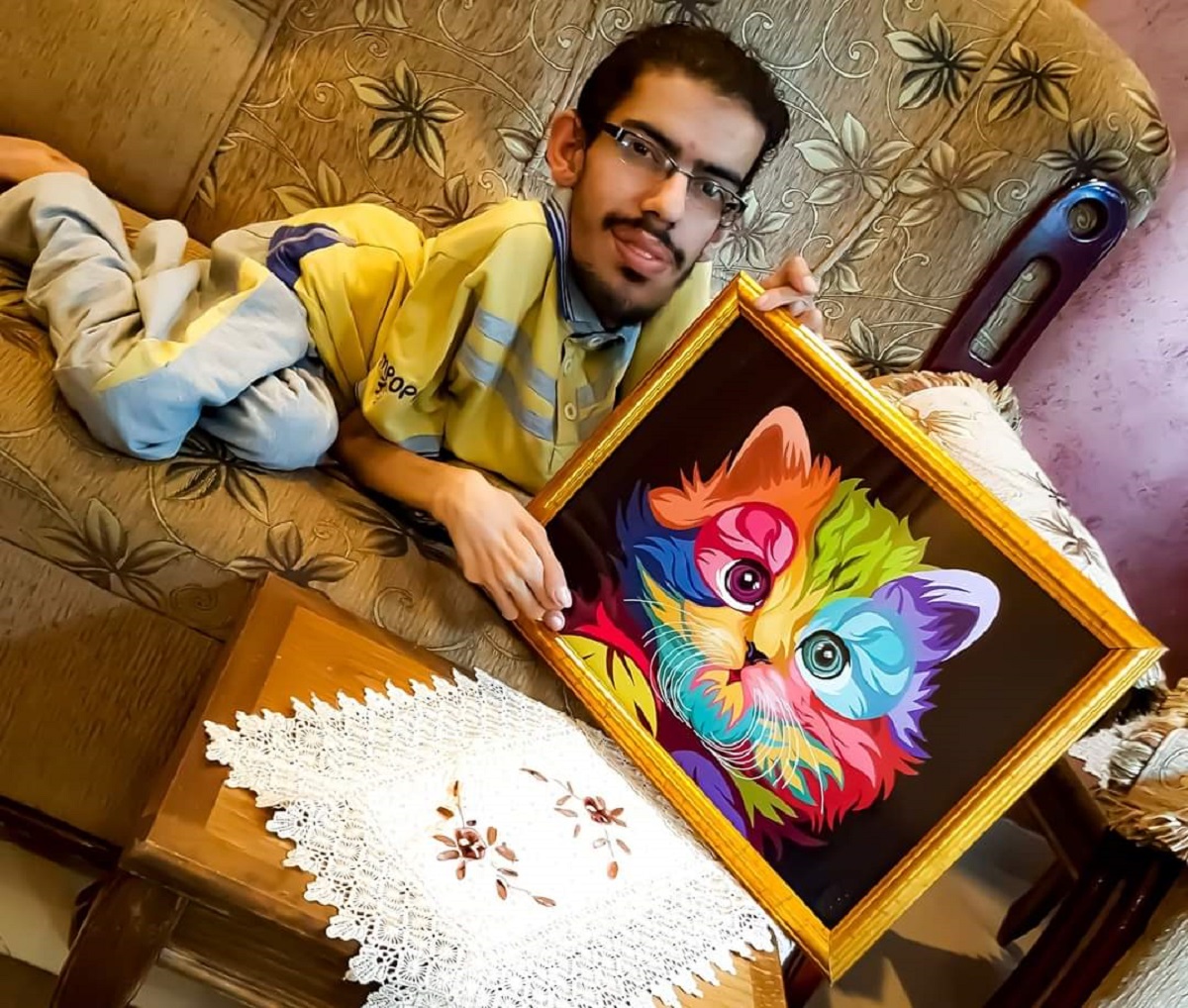
Even though Mohammad Al Dalou left Gaza and found safety in Qatar, the impact of the war in Gaza did not leave his side.
Mohammad, a 29-year-old artist with special needs, saw his life change, just like the 2.5 million Gazans affected by the October 7 war.
Before the war, he used to spend hours painting in his house in the Al Nasser neighborhood in northern Gaza – where the Israeli Occupation Forces had been carrying out intense ground operations, flattening complete neighborhoods, and killing thousands of innocent civilians.
“The war started, and we didn’t know what was happening,” Al Dalou told NOW. ” Like everyone else, we were shocked by what was going on. When the war intensified and the shelling began reaching us, we fled for the first time to my sister’s house, who is married. No transportation was available, and my father carried me in his arms the entire way.”
Since Israel initiated retaliatory actions against Hamas, over 80% of Gaza’s population—approximately 1.8 million people—have faced displacement. The destruction is staggering, with around 60% of Gaza’s buildings reduced to ruins. The northern region, in particular, has transformed into an area described as an ‘uninhabitable moonscape’ by the Associated Press.
In this war, more than 20,000 people died, and thousands more were buried beneath the rubble. The majority of the dead were women and children.
For Mohammad, the war has forever altered his life, and he faces a future filled with unknowns and overwhelming griefs and suffering.
For the love of art
Mohammad always had a natural knack for art, noticing his talent for painting early on. However, it wasn’t until 2011 that he actively began exploring ways to improve. Using the internet and books, he sought to enhance his skills all on his own, without any outside help.
Born with muscle atrophy and weighing no more than 25 kilograms, Mohammad was determined to not let his disability get in the way of his passion. Although he can only control 3 fingers on each hand, Mohammad produced hundreds of artworks and amassed a large social media following which helped him gain traction on multiple platforms.
Portraits, mandalas, animes and animals, Mohammad drew inspiration from various sources. He was particularly fond of the Japanese animation style dubbed “anime” and saw his art as a way to express the “frustrations of those living inside and outside of Palestine.”
“Art is not a career but it’s the ability to soar beyond the confines of the body,” he told NOW.
While pursuing his love for art, he successfully completed primary and secondary school. Unfortunately, a severe health scare compelled him to drop out, confining him to extended periods in a hospital bed.
After recovery, he dedicated himself entirely to his art. Days and nights melded together as he immersed himself in his creations, blending various styles.
His work was exhibited multiple times, inspiring audiences by demonstrating his triumph over his disability. Despite this success, life in Gaza, even before the war, had its ongoing difficulties.”Living in Gaza can be quite challenging because there’s very little infrastructure designed for people with disabilities. Transportation is difficult, public places aren’t accommodating, and there’s a lack of support or recognition for the rights of individuals with disabilities,” he said.In 2022, according to the Palestinian Center for Human Rights, approximately 93,000 Palestinians in the occupied territories were reported to have disabilities, making up 2.1 percent of the total population. Of this figure, 52 percent, around 48,360 individuals, reside in the Gaza Strip, while the remaining live in the occupied West Bank.
The ongoing war has impacted individuals with disabilities significantly, disrupting their daily lives and exacerbating their emotional and physical suffering.
A dream lost
When the war started and the bombing intensified, they fled for the first time to their married sister’s house, a journey made without available transportation, as their father carried him in his arms throughout.
Subsequently, they were compelled to evacuate once more—this time alongside their sister, her spouse, and their children—to seek refuge at their brother-in-law’s family residence.
“Even there, the threat of bombings persisted, causing distressing echoes across the surroundings,” Al Dalou said.
Their third displacement led them southward, specifically to Rafah. Each passing day brought intensified bombings, exacerbating their plight. Scarce resources and soaring prices compounded their challenges. Battling a heart condition, he faced the unavailability of vital medication due to border closures. Shortages of food and water further aggravated the situation. Beyond the physical toll, the harrowing sounds of bombings deeply affected their mental well-being.
His house, his belongings, his precious memories and his art were all lost in the bombing.
“I wished for a dignified and happy life, a beautiful future, a cozy home, and the opportunity to exhibit my work in exhibitions outside Gaza, so the world could see the art I lost in the war,” the artist expressed with grief and despair. “I also aimed to provide a comfortable life for my elderly parents; they deserve peace and comfort.”
Fortunately, he and a few immediate family members managed to leave Gaza and receive necessary treatment in Qatar. However, with the rest of his family still in Gaza and ongoing distressing events, peace of mind seems out of reach.”I simply no longer see a future. I don’t even have words or even a description for my loss! Life has turned into a faded shade of gray,” the artist said.
In the relentless chaos of the world, Mohammad’s narrative is only a fraction of the grim reality in Gaza. A ceasefire is urgently needed. The challenging path ahead for the Palestinian people looms, knowing that healing wounds and reconstruction of their lives and dreams will be a lifelong process.



